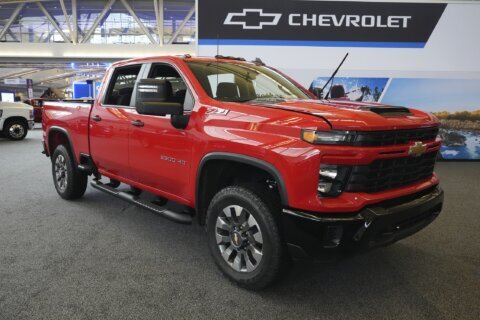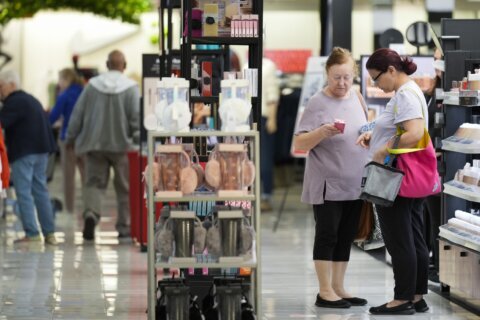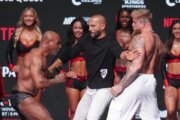NEW YORK (AP) — Verizon Communications has long enjoyed its position as the leading provider of mobile services in the U.S. But a new trend of price-conscious customers holding onto their old phones has hurt the bottom line for telecom companies seeking to capitalize off the sale of new mobile phone lines.
Enter Verizon Chief Marketing Officer Leslie Berland, who joined the telecom giant in January. She was Twitter’s first chief marketing officer nearly a decade ago and spent about a year at Peloton after leaving the social media platform in 2022. She started at Verizon in January and announced the company’s first rebrand in nine years, including a bold update to the iconic checkmark logo.
The rebrand has been paired with fresh promotion of Verizon’s myPlan platform, which allows customers to pick and pay for select services. Verizon also announced a partnerships with streaming services — such as Netflix and Disney — to offer promotional bundles.
Berland spoke to The Associated Press about the strategy behind the rebrand, and why it was necessary to keep the company growing. The transcript has been edited for length and clarity.
Question: What compelled Verizon to rebrand now?
Answer: Verizon is an extremely known brand in this country. I think it’s about 99% awareness. And what the research will show you is that we are seen as a respected, trusted, reliable brand and company. And that is a dream state for any company, big or small, right?
But what we also found is that because so much of what Verizon does is invisible. You don’t see it and you don’t feel it, (the service) just works. And so what we saw in the research, there is sort of a distance between the brand and the consumer. So yes, we’re a (telecom) company but we’re also a life company, but people don’t think about us in their day-to-day life. So the challenge for us is to make our invisible visible and bring forward the things that we do in a meaningful and authentic way and show the role we play in people’s lives.
The other thing that we looked at from a marketing perspective and advertising perspective is the (telecom) space, where, over time, it’s become a sea of sameness. A lot of the language is the same. The formats are very similar, a lot of the creative is similar. So it is really our opportunity now to be very bold and really breakthrough in a way that is meaningful to the consumer.
Q: What was the thinking going into integrating the iconic checkmark into the V in Verizon?
A: The checkmark came out about nine years ago. It was introduced with the intention to show and emphasize the reliability (of the Verizon brand). But for a brand that now very much needs and should reflect an emotional and personal connection, the check is a very transactional sort of symbol.
The other thing that we found with the check mark is that because it’s a generic symbol there’s relatively low awareness from consumers of the check’s association with Verizon. Given how well known we are, our logo should be something that is very resonant. So we moved the check into the V.
We really see this as hearkening back to the origins of the Verizon name — veritas and horizon — life and what’s possible with the potential of life. So we brought those two things together in the design. So we’re using a lighter red and then we have the glow of the horizon in the middle of the V. That’s how we transitioned to what we now call the glow V.
Q: Has the decentralization of social media affected your approach to branding and marketing at all?
A: Over the years, absolutely. And (social media) continues to change and evolve at a very rapid place, especially the creator economy. And so what you’re pointing to is really very much a fragmentation of channels where people are absorb information each and every day, often throughout their day.
The opportunity is that you can really reach the right customer with the right message at the right time in the channel that makes the most sense. So I think what’s involved is that there needs to be a deep understanding of these platforms. This is not something that you can fake. You really need to live it. You need to use these platforms. You need to understand it. The teams working on it need to understand it. Because it’s a science but very much an art.
The speed at which the conversation changes is absolutely dynamic and surely has changed everything we’ve done as marketers over the years and will continue to do so.
Q: Are you concerned about AI-generated misinformation involving the Verizon brand? And how do you scan for that?
A: The industry over the years has had to become much more sophisticated around misinformation — among many other things that are not in our control — and so our response has evolved very rapidly.
So over time, there has been increased amount of tools and monitoring and tracking and assessment and even polices to to assess, track, evolve and be agile in our response to misinformation.
Copyright © 2024 The Associated Press. All rights reserved. This material may not be published, broadcast, written or redistributed.







